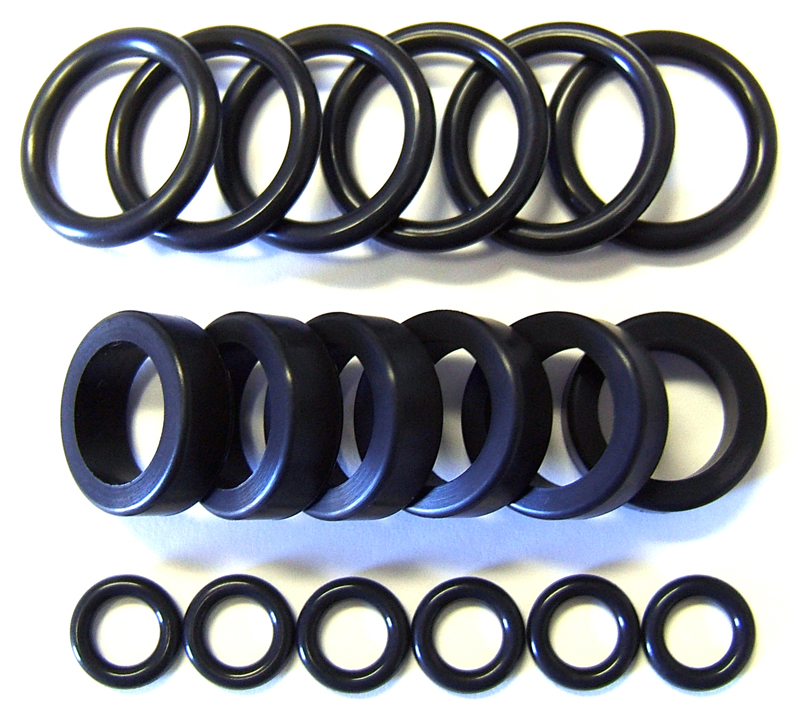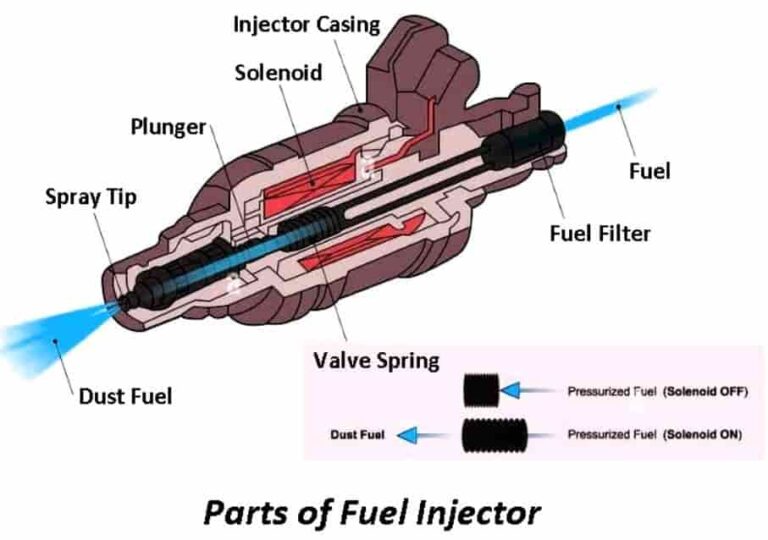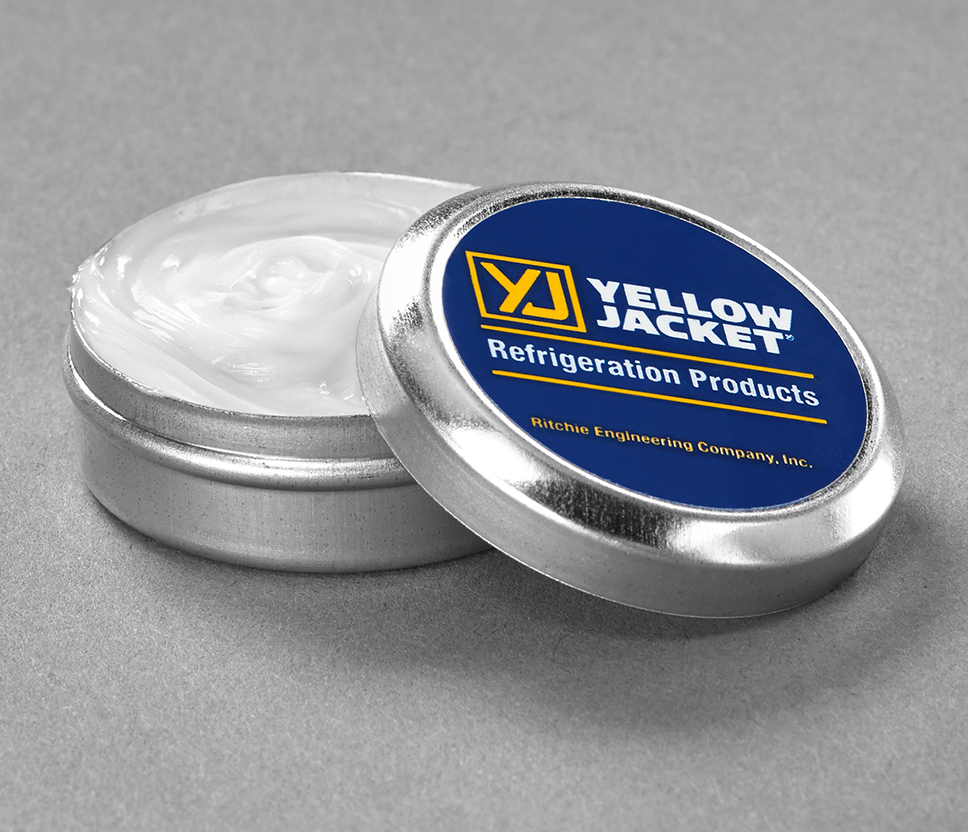What is the best lubricant for fuel injector o-rings? This question, seemingly simple, holds the key to a smooth-running engine and a fuel system that operates at peak efficiency. Fuel injector o-rings, those tiny seals within your engine, play a crucial role in preventing fuel leaks, ensuring proper combustion, and maintaining optimal performance. These often overlooked components are susceptible to wear and tear, leading to issues that can range from minor fuel leaks to significant engine damage.
Understanding the nuances of lubricant selection and application is paramount to keeping your engine running smoothly and maximizing its lifespan.
The delicate balance of fuel, pressure, and heat within your engine necessitates a careful approach to lubricant selection. A variety of lubricants exist, each boasting unique properties and characteristics that dictate their suitability for fuel system applications. Factors like compatibility with fuel and engine materials, operating temperature, and pressure all come into play when choosing the right lubricant for your fuel injector o-rings.
This guide delves into the complexities of fuel injector o-ring lubrication, providing insights into the types of lubricants available, key considerations for selection, and practical tips for application and maintenance.
Importance of Fuel Injector O-Rings

Fuel injector O-rings play a crucial role in maintaining the integrity of your engine’s fuel system. They are small, yet vital components that ensure a leak-free fuel delivery, directly impacting the engine’s performance and efficiency.
O-Ring Function and Importance
Fuel injector O-rings act as seals, preventing fuel leakage from the injector body to the fuel rail or the engine block. They are positioned around the injector’s body, where it connects to the fuel rail and the engine manifold. These O-rings ensure that fuel pressure remains contained within the injector, enabling precise fuel delivery to the combustion chamber.
Consequences of Damaged or Worn O-Rings
Damaged or worn O-rings can lead to several issues, impacting the engine’s performance and fuel efficiency:
Fuel Leakage
Fuel leakage is the most immediate consequence of a damaged O-ring. A worn or cracked O-ring will allow fuel to escape from the injector, leading to a loss of fuel pressure and a reduction in fuel delivery to the combustion chamber.
Engine Misfire
Fuel leakage can cause the engine to misfire. This occurs when the fuel injector fails to deliver the correct amount of fuel to the combustion chamber, resulting in an incomplete or erratic combustion process. Misfiring can cause a loss of power, rough idling, and an increase in fuel consumption.
Fuel Vapor Emission
Fuel leakage can also lead to increased fuel vapor emissions. This occurs when leaked fuel evaporates into the atmosphere, contributing to air pollution and environmental damage.
Engine Damage
In severe cases, fuel leakage can cause damage to the engine. If fuel leaks onto hot engine components, it can ignite, causing a fire. Fuel leakage can also lead to the formation of deposits and sludge within the engine, which can hinder its performance and longevity.
Factors Contributing to O-Ring Deterioration, What is the best lubricant for fuel injector o-rings
Several factors can contribute to the deterioration of fuel injector O-rings, leading to their failure:
Age and Wear
Over time, O-rings can become brittle and cracked due to age and wear. The constant exposure to fuel, heat, and pressure can cause the material to degrade, leading to leaks.
Fuel Quality
The quality of fuel can also affect the lifespan of O-rings. Fuel containing impurities, such as water or dirt, can accelerate the deterioration process.
Extreme Temperatures
O-rings are exposed to extreme temperatures, both hot and cold. These temperature fluctuations can cause the O-rings to become brittle and crack.
High Pressure
Fuel injectors operate under high pressure, which can put stress on the O-rings. This stress can lead to premature wear and tear, especially if the O-rings are not properly installed or maintained.
Lubricant Types for Fuel Injector O-Rings
Choosing the right lubricant for fuel injector O-rings is crucial for maintaining proper fuel flow and preventing leaks. This section explores the common types of lubricants used for this purpose, examining their properties and suitability for fuel system applications.
Lubricant Types for Fuel Injector O-Rings
A variety of lubricants are suitable for fuel injector O-rings, each with unique properties and advantages. These lubricants play a crucial role in ensuring a proper seal, preventing wear, and extending the lifespan of the fuel injector components.
- Petroleum-Based Greases: These greases are widely available and cost-effective, often used in automotive applications. They provide good lubrication and sealing properties. However, they can degrade over time, especially when exposed to high temperatures or harsh chemicals, potentially leading to fuel system contamination.
- Silicone Greases: These greases offer excellent resistance to high temperatures and chemicals, making them suitable for demanding fuel system environments. They are generally inert and compatible with most fuel components, reducing the risk of contamination. However, silicone greases can be less effective at lubricating under high pressure and may not provide as strong a seal as other types of lubricants.
- Synthetic Greases: These greases are formulated with synthetic base oils and additives, offering superior performance compared to petroleum-based greases. They exhibit excellent resistance to heat, water, and chemicals, ensuring long-term lubrication and sealing. Synthetic greases are often preferred for fuel injector O-rings due to their enhanced properties and compatibility with modern fuel systems.
- PTFE-Based Lubricants: Polytetrafluoroethylene (PTFE) is a highly inert and slippery material, making it an excellent choice for lubricating fuel injector O-rings. PTFE-based lubricants offer exceptional resistance to wear, chemicals, and extreme temperatures. They provide excellent sealing properties and are generally compatible with fuel system components.
- Molybdenum Disulfide (MoS2) Lubricants: MoS2 is a solid lubricant that provides excellent wear protection and lubrication under high pressures. It is often used in combination with other lubricants to enhance their performance. MoS2-based lubricants are particularly effective in preventing friction and wear on fuel injector O-rings, ensuring smooth operation.
Factors to Consider When Choosing a Lubricant: What Is The Best Lubricant For Fuel Injector O-rings
Selecting the right lubricant for fuel injector O-rings is crucial for ensuring proper engine performance and longevity. The lubricant must be compatible with the fuel, engine materials, and operating conditions to prevent leaks, corrosion, and premature wear.
Compatibility with Fuel and Engine Materials
Lubricant compatibility is paramount to prevent adverse reactions and ensure the integrity of the fuel system. The lubricant must be chemically inert with the fuel, meaning it should not react with the fuel or degrade its properties.
For example, a lubricant incompatible with gasoline could lead to fuel contamination, clogging of injectors, and engine performance issues.
Additionally, the lubricant should be compatible with the materials used in the fuel system, including the O-rings, injectors, and fuel lines. This compatibility prevents swelling, shrinking, or degradation of the materials, which could lead to leaks and malfunctions.
Operating Temperature and Pressure
The lubricant must withstand the high temperatures and pressures encountered within the fuel system. The lubricant’s viscosity and thermal stability are critical factors.
A lubricant with inadequate viscosity may become too thin at high temperatures, leading to reduced lubrication and increased wear. Conversely, a lubricant with excessive viscosity may thicken at low temperatures, hindering fuel flow and affecting engine performance.
Thermal stability refers to the lubricant’s ability to resist degradation under high temperatures. A lubricant that breaks down under heat can form deposits, clog injectors, and reduce fuel efficiency.
Recommended Lubricants for Fuel Injector O-Rings

Choosing the right lubricant for your fuel injector O-rings is crucial for ensuring optimal performance and preventing leaks. The ideal lubricant should be compatible with fuel, resist degradation over time, and provide a smooth, lubricated seal.
Recommended Lubricants for Different Fuel Injector O-Ring Applications
The following table Artikels some of the most popular and effective lubricants for fuel injector O-rings, along with their key features and suitability for various engine types:
| Lubricant Type | Brand | Key Features | Engine Types | Link to Manufacturer |
|---|---|---|---|---|
| Silicone Grease | Permatex Ultra Slick Silicone Grease | High-temperature resistance, excellent lubrication, fuel-compatible | Gasoline and diesel engines | Permatex Ultra Slick Silicone Grease |
| Dielectric Grease | CRC Dielectric Grease | Water-resistant, prevents corrosion, excellent for electrical connections | Gasoline engines | CRC Dielectric Grease |
| Synthetic Grease | Mobil 1 Synthetic Grease | High-performance, long-lasting, resistant to extreme temperatures | High-performance gasoline and diesel engines | Mobil 1 Synthetic Grease |
| Fuel Injector O-Ring Lubricant | Lucas Fuel Injector O-Ring Lubricant | Specifically formulated for fuel injector O-rings, prevents leaks and improves performance | Gasoline and diesel engines | Lucas Fuel Injector O-Ring Lubricant |
Application and Maintenance

Applying lubricant to fuel injector O-rings is a crucial step in ensuring proper sealing and preventing fuel leaks. The correct application technique and subsequent maintenance practices play a significant role in maintaining optimal performance and extending the lifespan of your fuel injectors.
Applying Lubricant to Fuel Injector O-rings
Applying lubricant to fuel injector O-rings requires a delicate balance of precision and thoroughness. The goal is to create a thin, even layer of lubricant on the O-ring’s surface without compromising its integrity or introducing contaminants.
- Clean the O-ring and surrounding area: Before applying any lubricant, ensure the O-ring and the surrounding area are clean and free of debris, dirt, or any previous lubricant residue. Use a clean cloth and a suitable cleaner specifically designed for fuel system components.
- Apply a small amount of lubricant: Use a clean, lint-free cloth or a small applicator to apply a thin, even layer of lubricant to the O-ring. Do not over-apply the lubricant, as excessive amounts can cause it to leak into the fuel system or interfere with the O-ring’s sealing function.
- Avoid contaminating the O-ring: Ensure the lubricant used is compatible with fuel and does not contain any harmful additives or contaminants. Using the wrong type of lubricant can lead to damage to the O-ring and the fuel system.
- Install the O-ring carefully: After applying the lubricant, carefully install the O-ring in its designated position. Ensure the O-ring is properly seated and does not have any gaps or folds.
Maintaining Lubrication and Preventing Leaks
Regular maintenance practices can help ensure optimal lubrication and prevent fuel leaks. These practices include:
- Periodically inspect the O-rings: Regularly inspect the O-rings for signs of wear, damage, or cracks. Replace any damaged O-rings immediately.
- Use high-quality fuel: Using high-quality fuel can help prevent fuel system contamination and minimize the risk of O-ring damage.
- Avoid using harsh chemicals: Avoid using harsh chemicals or cleaners on the fuel injectors and O-rings. These chemicals can damage the O-rings and compromise their sealing function.
- Consider professional maintenance: For optimal maintenance and to address any complex issues, consult a qualified mechanic or fuel system specialist.
By understanding the intricate interplay between fuel injector o-rings, lubricant selection, and engine performance, you empower yourself to maintain the health and longevity of your vehicle’s fuel system. The choice of lubricant is not simply a matter of convenience; it’s a strategic decision that impacts your engine’s efficiency, fuel economy, and overall performance. From the delicate balance of compatibility to the crucial factors of temperature and pressure, every aspect of lubricant selection plays a critical role in ensuring the smooth operation and optimal performance of your engine.
By embracing informed lubrication practices, you pave the way for a smoother ride, increased fuel efficiency, and a more reliable engine for years to come.
Question Bank
What are the signs of a worn or damaged fuel injector o-ring?
Signs of a worn or damaged fuel injector o-ring include fuel leaks, rough idling, decreased engine performance, and a noticeable fuel odor.
How often should I lubricate my fuel injector o-rings?
The frequency of fuel injector o-ring lubrication depends on the type of lubricant used and the driving conditions. Consult your vehicle’s owner’s manual for recommended intervals or seek professional advice from a mechanic.
Can I use any type of lubricant on my fuel injector o-rings?
No, not all lubricants are compatible with fuel systems. It’s crucial to use lubricants specifically designed for fuel injector o-rings to avoid damaging engine components or compromising performance.